

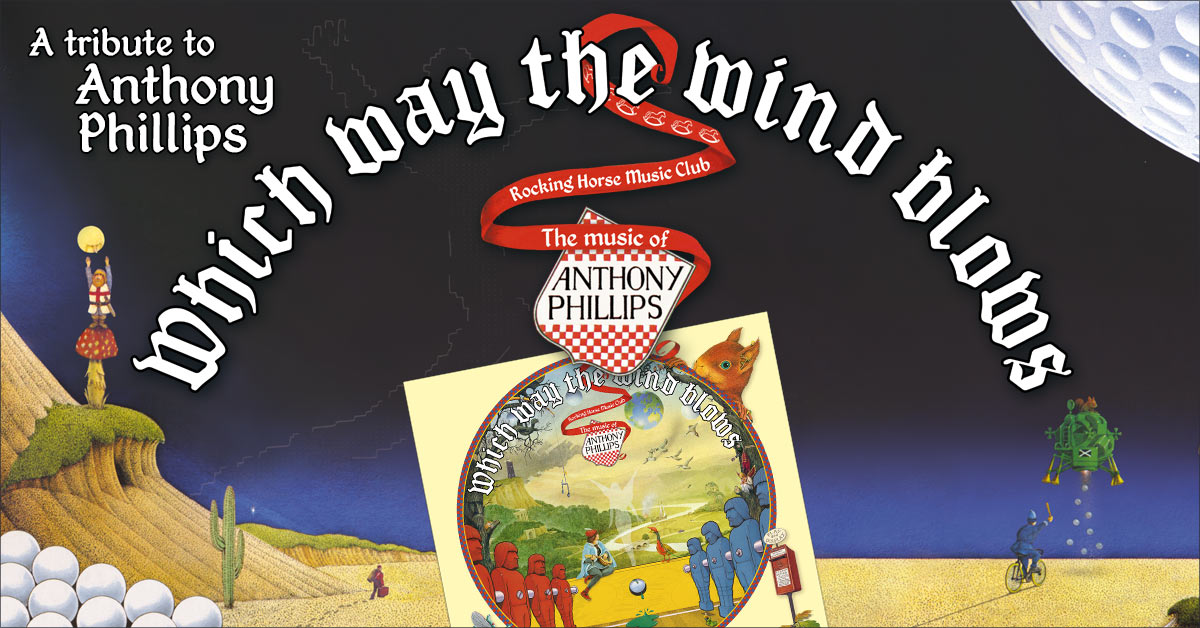
Rocking Horse Music Club are a collective of seven musicians. For some nine years they have been working together at the Rocking Horse studio, a recording studio in New Hampshire. Three of them also describe themselves as songwriters and can be found regularly at the microphone (as singers) or at the mixing desk (as producer). It is only a year ago that the band released its first album: Every Change Of Seasons contains five songs from three-and-a-half to four-and-a-half minutes – and the gospel-style single Everywhere Is Home just won an Independent Music Award.
The names of the seven are not likely to be familiar even to the seasoned music aficionado. Justin Cohn is a singer/songwriter based in New Hampshire and Massachusetts. Patric Gochez has his own band, Pat And The Hats. Producer Brian Coombes, who owns the studio, and some of his club mates have appeared on our radar twice in 2016. They worked on Anna Madsen’s album Efflorescence, which involved Anthony Phillips and GTR drummer Jonathan Mover, and also on the charity album Harmony For Elephants, which contains the most recent composition created by two (former) members of Genesis. Dale Newman, Genesis factotum and these days Ant’s “guitar czar”, recorded his latest album with them in 2018.
With its second album project, which is longer, more sophisticated and has an exciting live project tied in, the RHMC pays homage to none other than Anthony Phillips. This choice kind of suggested itself with Brian Coombe’s love for Ant’s music and their recent collaboration, but it was a clever decision nevertheless: You could say (negatively, as it were) that Ant’s music is frequently overlooked by those who only pay attention to the “big five” or who sort the music by genres into which Ant’s music is difficult to place. You could also say (positively, as it were) that Ant’s music, despite its age of up to half a century, has hardly aged, and that a tribute album like this elevates songs that are legendary to connoisseurs to the level of true classics.
Apart from the seven members of the Rocking Horse Music Club an illustrious group of female and male singers and musicians appear on the album – no less than 23 people in total, not to mention the staff who worked on the album outside of the recording room.
The songs come mostly from Ant’s debut album The Geese & The Ghost (four tracks) and the song-oriented early band albums Wise After The Event and Sides (two tracks each). This is understandable because RHMC is a rock outfit and these are the best-known and most popular of Ant’s albums. The Geese … was, admittedly, not a band project, but it was impossible to ignore because of its standing amongst the fans (and the members of the RHMC). Invisible Men, the only album that was released by “The Anthony Phillips Band” could not hold its own against those three albums, though its material would have been equally suited for the project. Only one song from Invisible Men, or, rather, from the bonus CD of the 2017 re-release was included in this album.
There are different ways of approaching such an album project. You can, for instance, use current production options (i.e. technology, playing and singing techniques, know-how…) to create a listening experience that differs from the original. Steve Hackett’s Genesis Revisited II is a good example for this. Or you could introduce your own musical ideas, change the arrangement of the character of the whole piece by changing parameters like harmonics, rhythms, instruments, speed, dynamism… or even rewrite some parts (cf. Steve’s first Genesis Revisited album). Both approaches have been used in each track to varying degrees. (Using neither approach would have resulted in the pointless exercise of copying the original, which would have been a tiresome experience for the listener – this does not happen on this album).
The original keys have been retained, though, and there have hardly been any changes in the lyrics.
The first two tracks showcase how you can improve the production (i.e. following mainly the first approach) to what may end up as mixed results.
Like the Sides album, this record begins with Um & Aargh (and finishes with Nightmare). Unfortunately, you will probably already pause at the intro. It is not the crotchet rest the band insert between the 24th and 25th of the 32 crotchets in the original intro that disturbs you. Instead of hearing a C major chord with a major seventh that gradually develops into a B7 chord (with a suspended fourth) in order to lead into the main key of E minor you are served with a simple E minor chord in root position, then a second static chord (B7 with suspended fourth, without the fifth and with an unclear B flat going towards C). Why does the reviewer indulge in all this hair-splitting musical lingo right at the beginning of such an accomplished album? Well, because it is the very first impression of the album, a moment that defines how you experience the album. The rendition of Um & Aargh stays mostly close to the original, so the ear wants to spot all the dear musical characteristics of the original – and they’re absent at this crucial point – for reasons that are not at all easily discerned (makes you want to go “aargh!”). After this bungled beginning things move on smoothly. Patrick Gochez masters the difficult lyrics with the fast and numerous syllables, though his voice lacks the anger evident in both the lyrics and Ant’s vocals. He also leaves out the curse Ant utters after the line “shouting something obscene”. The backing track not just in this song is gentler, more rounded, and a bit milder in the high frequencies than the original. While the original version fades out, on this recording we get a beautiful a cappella part with “And it’s better … industries.”
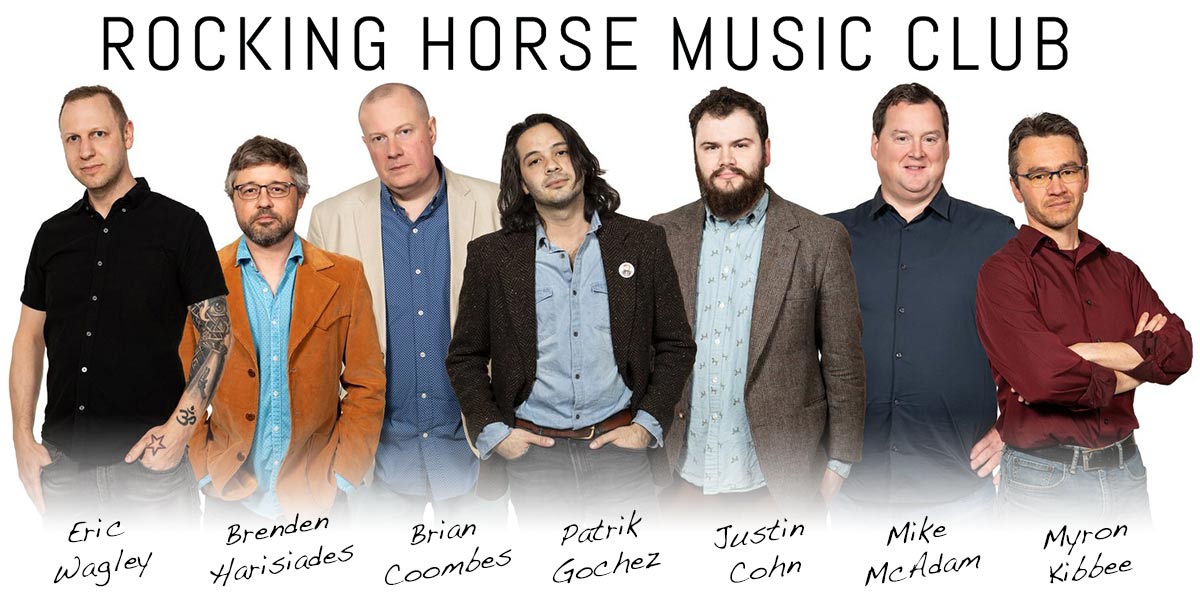
The album continues with a beautiful Paperchase (sans its subtitle May Never Wears A Frown) from Wise After The Event. Justin Cohn’s clear and velvety voice is perfectly suited to the songs of the 1978 album, and the weaknesses of Ant’s vocal back then in the quieter parts are more than made up for. The arrangement copies the original down to the details, while changing the sound slightly here and there. The thin synthesizer tune of the original during “darkness falls on December” is replaced with warm mellotron strings to wonderful effect – Brian Coombes plays some terrific keyboards on this song. The alternating guitar fourths that gave the original a slightly Chinese touch have been left out, which does not harm the track but shortens the outro a bit.
The next track is the delicious Which Way The Wind Blows from The Geese & The Ghost that lent the album its title. A number of changes have been introduced here. The first half of the seven-minute track consists of the song part while the second half gives the instrumental afterlude the time to unfold. Drums and bass take the rhythmic lead and speed up this version. The vocals are sung by the first “special guest” on the album: Noel McCalla is known from Mike Rutherford’s Smallcreep’s Day and Manfred Mann’s Earth Band. He and the backing singers do a great job; the line “into the Westlands” is particularly pretty. Less pretty are the new harmonies of the songs. As one minor chord in its basic form (i.e. Brenden Harisiades’s bass usually plays the keynote) moves into the other there are unpleasant effects of consecutive fifths. In the delicate and very carefully arranged original each harmony develops from the preceding passing tones, all the concords hover in a mozartesque balance. Here, however, everything appears to be simplified, steamrollered and incongruous, which is a pity (not to mention the missing brief solo after “what it ever seems”). One of Dan Owen’s songs from Sides or something from Invisible Men may also have been better suited for Noel’s voice. In a stylistic break, the second half of the track is the passacaglia on a bass motive of E – E flat – D that is repeated 27 times (in the original, ten times). The next special guest, none other than Steve Hackett, improvises on it in his typical way until the track fades out – again a pity, for the closing section of the original that sounded slightly confused (and faded out, too), could have been tidied up here.
We go further back in time. Justin Cohn sings Silver Song in its original version of 1973, i.e. with the "flower"-lyrics and without the additional bridge introduced in Ant’s 1990 version. Plus there is a slight change in the lyrics (flowers aren’t that submissive). The keyboard solo at the end of this very simple song of Ant and Mike’s is performed by Nick Magnus; he extends it slightly as the vocals drop back a bit but keeps it in the style of the original.
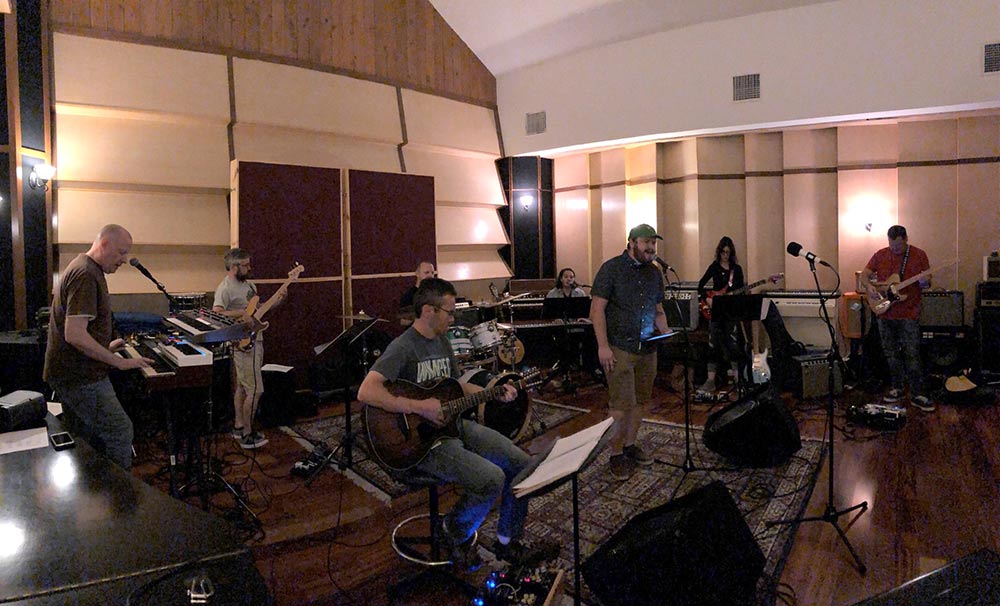
A special treat awaits in the middle of the album: Something Blue was released as an instrumental for a single acoustic guitar on Dragonfly Dreams. The demo from the Invisible Men sessions on which Richard Scott sang came out only in 2017. Scott sang the sad lyrics in a heart-rending tone that has, in retrospect, a touch of A-ha’s Morten Harket’s voice. On this song we hear the only female lead vocal on the album. Evelyn Cormier participated in American Idol in 2019 and recorded at Rocking Horse studios. The team and Ant looked for a song in his repertoire that would work for here. Her dark voice gives the album an additional note, and you can easily ignore her peculiar pronunciation of some consonants. The beginning and the ending of the original arrangement have been shortened while cello and trumpet come in to support the band – a good idea, though the instruments have not been integrated convincingly (the cello is drowned out a bit while the trumpet should have been restricted to less but relevant moments); perhaps a remnant of the time pressures of the project.
Though Cohn does another brilliant job of singing, Pulling Faces, Ant’s journey to the end of the universe, is not quite convincing. The intro is quoted incorrectly for no discernible reason again (the plucked notes at the beginning have been dropped, the original does not have the minor third steps upwards), and the speed is much slower than in the original. The fluttering synthesizers at the end of the 1978 version are replaced with a fine solo on the electric guitar.
Once more The Geese & The Ghost with the old twins of Collections and Sleepfall: The Geese Fly West. The former was arranged by Patrik Gochez and recorded, basically, with his Hats, as a band track with bass and drums. The intro has been changed and abbreviated; the emotional strings from the original have been replaced with a sophisticated vocal arrangement. Myron Kibbee’s slide guitar is just the icing on the cake.
The rhythm group continues in Sleepfall. The eight-bar theme that used to be repeated five times in the original can now be heard seven times. After the change into the subdominant key the track heads towards the finale (without the original closing section); all in all, the track is roughly as long as the original. John Hackett, who played the flute in the original version, also plays the flute in this version.
Though the first impression of the music on this CD was not quite perfect, the last is all the better. Nightmare (not “air-conditioned” with Ant) is reproduced with flawless guitar playing. The new version stays close to the original, though it is even slightly improved: The production is better, as is the beginning of the second part (that reminds me of morse code). Before the reprise of part A the main theme is quoted on optigan and toy piano (both are also known from Steve Hackett’s oeuvre) – a pleasant surprise for aficionados.
What follows then is one of the best ideas of the whole album: A singer called Caroline Harter (former Miss New Hampshire), who was recording at the studio, sings high vocalises over the instrumental music, thus using her voice like an instrument – one of Coombes’s ideas who freely admits that he cannot hide the influence Pink Floyd have had on him. The vocalises continue to the end. Saxophone improvisations by Supertramp legend John Helliwell counterpoint them. Nightmare? Not at all a nightmare, but the grand finale to a delightful experience!
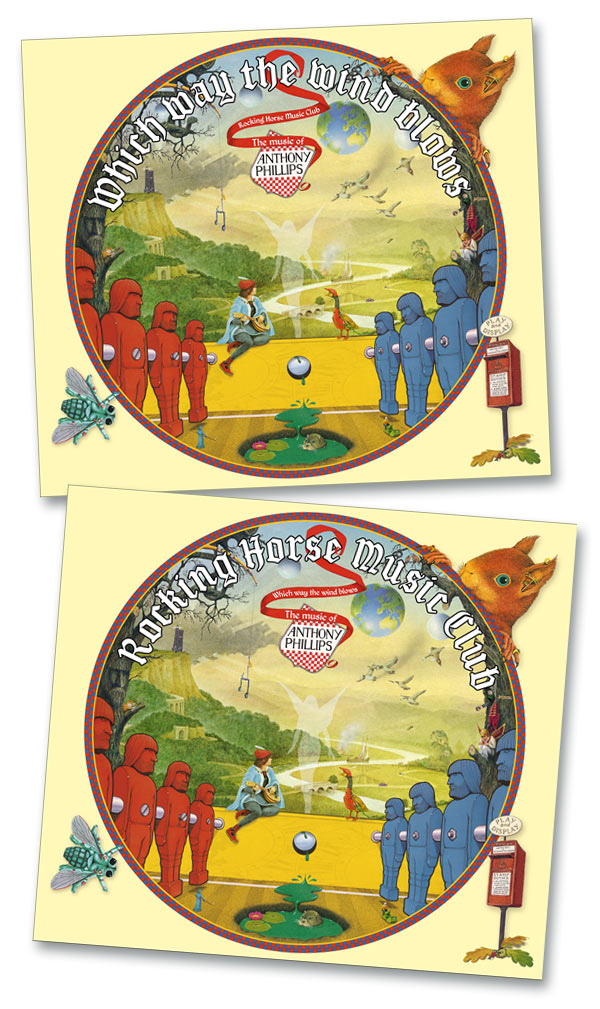 The artwork of this release is very obviously the work – not just of Peter Cross, but also by fanclub founder and art director Helmut Janisch, who has created similar designs for Ant (and others such as Dale Newman) in the past (e.g. the Anthology compilation, Lyric Book, The Living Room Concert). Helmut used elements from various album covers Peter Cross designed for Ant – mainly, but not exclusively, the albums represented in this collection – and created something new. Actually there are a number of details to discover that will raise a smile. The investigation into where the toilet paper roll tossers came from was still ongoing at the time this review was finished.
The artwork of this release is very obviously the work – not just of Peter Cross, but also by fanclub founder and art director Helmut Janisch, who has created similar designs for Ant (and others such as Dale Newman) in the past (e.g. the Anthology compilation, Lyric Book, The Living Room Concert). Helmut used elements from various album covers Peter Cross designed for Ant – mainly, but not exclusively, the albums represented in this collection – and created something new. Actually there are a number of details to discover that will raise a smile. The investigation into where the toilet paper roll tossers came from was still ongoing at the time this review was finished.
Postscript: Even before the album came out a second run was commissioned. There are, it seems, special provisions regarding the font sizes in which the names of the honored and the performing musicians have to be given – spot the differences, anybody? Considering that there also is a promo of the album in a cardsleeve this album has almost as many different editions as The Geese & The Ghost. And this lovingly created professional international production is certainly worth picking up.

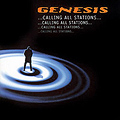


Last Genesis Studio album from 1997. Remastered Version from 2007 with new Stereo Mix.
Review available